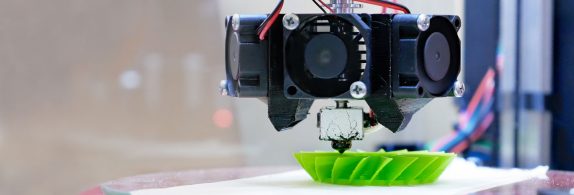Is 3D printing innovation outpacing regulation?
3D printing innovation has rapidly evolved over the years, and while its quality and popularity in the medical sector has advanced significantly, experts warn Australian regulation is failing to keep up with the innovation.
What is 3D printing?
The process called additive manufacturing, or 3D printing, deploys a digital model to build an object of any size or shape by adding successive layers of material in a single continuous run.
This layering capability enables the manufacturing of complex shapes, such as the intricate structure of bones or vascular channels that would be otherwise impossible to create.
In recent years, significant advances in computer design and capabilities to translate medical imaging to digital models readable by 3D printers are widening the potential application of the technology in health care.
Industry experts have celebrated the technology as having amazing potential, and opening a horizon of amazing possibilities, from uses in creating customised prostheses, hearing aids, dentures, to even biological active implants for craniofacial reconstruction. In September last year, Brisbane’s Princess Alexandra Hospital (PAH), saw the first 3D-printed tibia transplant.
In neurology, the University of Saskatchewan even holds a 3D-printed human brain replica constructed using MRI data. Meanwhile one of the most promising 3D printing technological advances is the bioprinting of living tissue.
Regulatory grey areas
Last year the Therapeutic Goods Administration (TGA) announced it is proposing a new raft of changes to the personalised and 3D printed medical devices regulatory framework, following a recognition that the rapid innovation in this space is already raising questions globally about the adequacy of the current medical device regulatory frameworks to mitigate risks to patients, and to meet requirements for health care providers and manufacturers.
Specifically, the TGA sought comments on its proposed options to:
- potentially re-define ‘custom-made devices’;
- introduce new definitions within the personalised medical devices vocabulary;
- clarify entities who may be liable as a manufacturer of a supplied device;
- harmonise regulatory approaches with other jurisdictions; and
- include special provisions for certain dental and other low risk devices to reduce unnecessary regulation burden.
Once the reforms are in place, they will have a knock-on effect on the entire industry, including healthcare professionals and patients of these medical devices.
Experts want balance between safety and access
Despite the wider potential of 3D printing, some experts say the regulations are simply failing to keep up with the fast pace of innovation, and that there needs to be a more urgent look at access to 3D printers versus safety, especially given incidents such as US medical device company, DePuy’s recall of their knee and hip replacement systems. In that case, the 3D-printed system was made from layers of metal with shavings that could come loose, potentially harming the patient.
Importantly, the pressure is on the healthcare industry to become more acutely aware of the product safety implications of 3D printing, as failing to do so will mean a scramble to put out regulatory fires and unravel a host of new and emerging regulatory issues.









